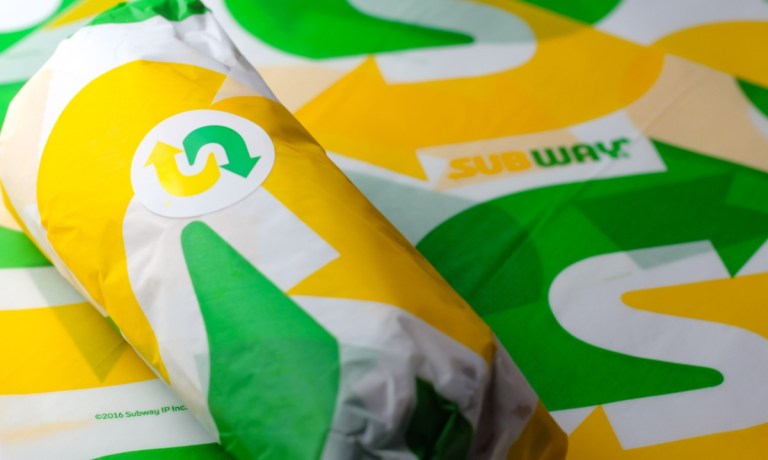
The quick-service restaurant sector is experiencing a wave of global expansion, with Subway making bold moves to amplify its presence and enhance digital engagement.
In just three years, the brand has secured more than 20 master franchise agreements, paving the way for more than 10,000 future restaurant commitments and driving over 40% of its new openings this year. This strategic growth solidifies Subway’s footprint and positions it at the forefront of the evolving dining landscape.
In an interview with PYMNTS, Subway’s Global Chief Development Officer Mike Kehoe said master franchise agreements are an important part of the company’s global growth strategy “and we continue to look for experienced, well-resourced operators with the vision, resources, passion, and operating and market expertise to help grow the brand.”
In late August 2023, Subway announced that it would be bought by Roark Capital. The private equity firm, which owns Inspire Brands (parent company of Dunkin’, Baskin-Robbins and Arby’s, among others), took the reins of the nearly 37,000-restaurant chain in a deal reportedly valued at up to $9.55 billion, according to Reuters.
Since then, Subway has retooled its loyalty program, adopting a tiered system in the U.S. and Canada. The MVP Rewards program offers more rewards the more a consumer spends.
“Subway fans are the best in QSR, and to thank them for their loyalty, we’re giving them the star treatment as MVP Rewards members,” Mike Kappitt, the brand’s chief operating and insights officer, said in a statement last year in announcing the rewards program relaunch. “Consumer input helped inform our refreshed loyalty program to create a best-in-class experience.”
With seven new agreements signed in 2024 — marking entries into Paraguay and Mongolia and expanding in several European countries and Brazil — Subway’s growth strategy focuses on collaboration with experienced multiunit operators. This approach is expected to double new openings compared to pre-COVID levels.
This focus on collaboration sets the stage for addressing the challenges and opportunities Subway encounters as it enters new markets like Paraguay and Mongolia.
“The key to strategic, international growth is finding the right partners and adapting our business strategy to meet each region’s needs and preferences,” Kehoe explained. “When entering new markets, we have even more flexibility with the menu and operating model. For example, we can launch set-built menu items exclusively, since the market isn’t used to the build-your-own model, and we can leverage new technologies that enhance the guest experience.”
Across all markets, Kehoe added, “If consumers aren’t preparing a meal at home, they’re either looking for experience or convenience. Subway has the opportunity to deliver on both, and we are continuing to look for ways to make it easier for guests to enjoy Subway, whether through online ordering, kiosks, or third-party delivery.”
This aligns with Subway’s efforts to strengthen its nontraditional business model, which accounts for about 25% of its global presence.
Subway partners with brands like Love’s Travel Stops and is expanding into airports and college campuses. This adaptable strategy cements Subway’s position as a player in the quick-service market, reaching millions of customers across nearly 37,000 locations globally.
“There is a significant opportunity to expand our nontraditional footprint, including in hospitals, universities, casinos and airports, and we use a holistic approach to identify new nontraditional locations that are convenient, accessible, and meet our guests’ needs,” Kehoe explained.
“While there isn’t one thing we look for when evaluating a new location, there are metrics that help us determine its potential for success, such as on-campus population at universities and passenger traffic at airports.”
Alongside these efforts, the brand is placing an emphasis on digital innovation to enhance customer engagement and streamline operations, Kehoe said.
Digital integration and growth remain central to Subway’s transformation, with the brand making strides in its online presence. Compared to the same period in 2023, digital sales have surged.
“In North America, we’ve made significant digital investments over the last year by refreshing our app, loyalty program, and catering business, with a focus on delivering added convenience and a better experience for guests,” Kehoe said.
“In key European markets, we’re rolling out the next phase of our digital experience with a refreshed app and loyalty program, as well as self-order kiosks in select restaurants.”
As Subway continues to enhance its digital presence, the brand recognizes that physical transformations are equally vital to its overall strategy.
“Remodeling is critical to our transformation journey,” Kehoe added. “A new, modernized look improves guest perception and reenergizes franchisees and their teams.
“Over 20,000 restaurants globally are in Subway’s current Fresh Forward image. In key European markets, we’re piloting a digitally enabled restaurant design to deliver added convenience for guests, create more efficiencies for franchisees and their team members, and help drive traffic and sales.
“We’re in the early stages of testing the design, and reactions from guests, franchisees and sandwich artists have been overwhelmingly positive.”